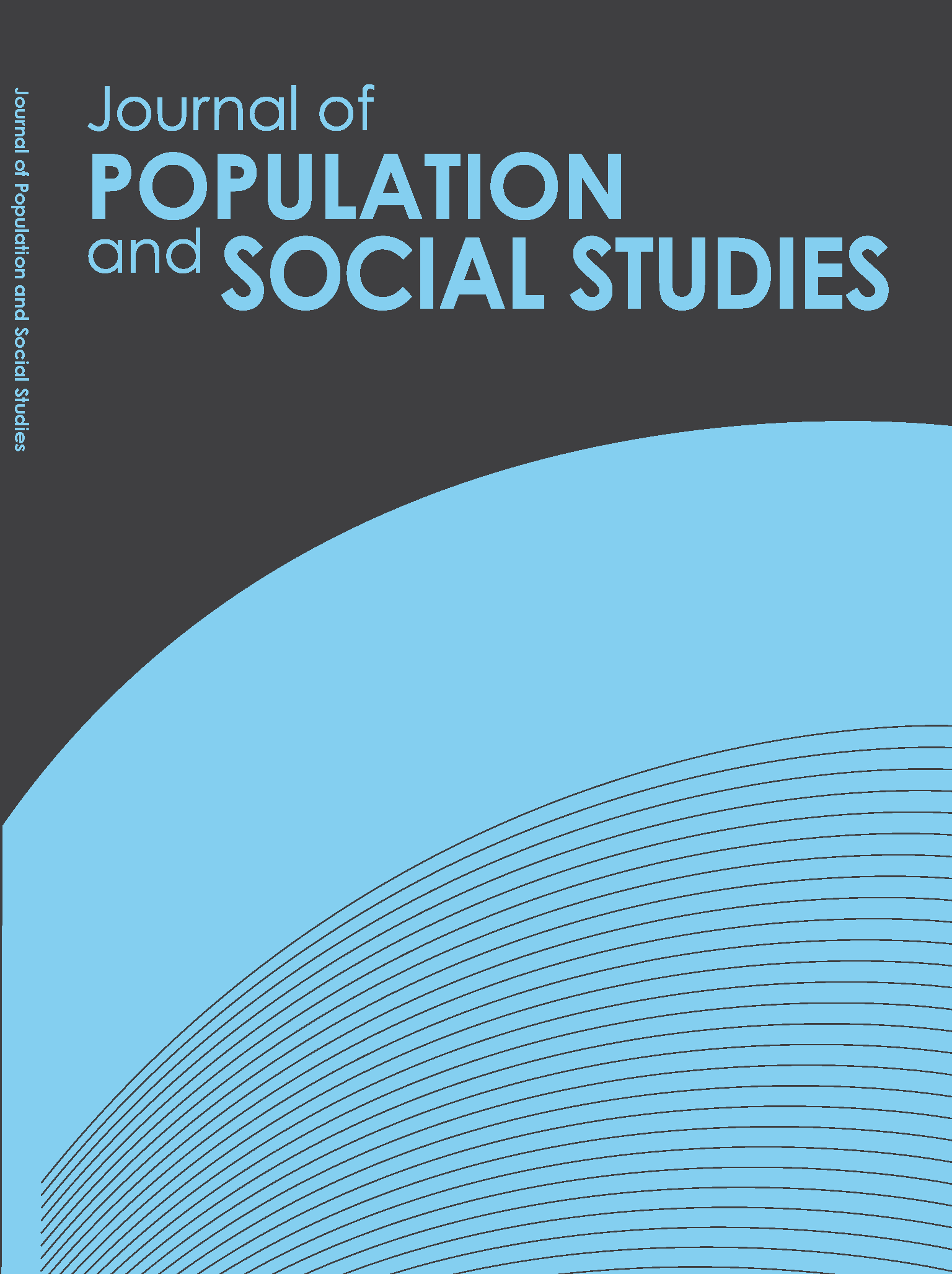Estimation of Adult Mortality in Nigeria in the Era of Sustainable Development Goals: Insights from Census-Based Methods
Main Article Content
Abstract
This paper focuses on the estimation of adult mortality in Nigeria. The general objective is to obtain adult mortality levels for Nigeria which may be relevant in assessing the level of development and the progress of Sustainable Development Goals (SDGs) in that country. Census-based methods were applied to the 1991 and 2006 adjusted population census by age and sex to estimate adult mortality. The results of the study suggest that adult males in Nigeria have a higher life expectancy than their female counterparts in almost all age groups. At age 5-9, the life expectancy from the methods applied was below 60 years. The consequences of low life expectancy among adults include the early marriage of young girls, an increasing orphanhood burden, and high numbers of out-of-school children, which may hamper the achievement of SDGs in the country. Given that there is no consensus yet on the best approach for estimating adult mortality in developing countries, we recommend that census-based methods should be used for this task.
Article Details
References
• Beegle, K., & Krutikova, S. (2007). Adult mortality and children’s transition into marriage. World Bank Policy Research Working Paper, 4139:2-21.
• Chukwu, A.U., & Oladipupo, E.O. (2012). Modelling adult mortality in Nigeria: An analysis based on the Lee-Carter model, Studies in Mathematical Sciences,5(2), 1-12.
• Ekanem, I.I. (1972). The 1963 Nigeria census: A critical appraisal. The Croxton Press (West Africa) Limited, Ibadan.
• Federal Ministry of Health, Nigeria (2013). National HIV & AIDS and reproductive health survey, 2012 (NARHS Plus). Federal Ministry of Health Abuja, Nigeria.
• Gakidou, E., Hogan, M., & Lopez, A.D. (2004). Adult mortality: Time for a reappraisal, International Epidemiological Association, 33:, 710-717.
• Helleringer, S., Pison, G., Kanté, A.M., Duthé, G., & Andro, A. (2014). Reporting errors in siblings’ survival histories and their impact on adult mortality estimates: results from a record linkage study in Senegal. Demography, 51(2), 387–411.
• Hill, K. (2003). Adult mortality in the developing world: What we know and how we know it. Training workshop on HIV/AIDS and Adult Mortality in Developing Countries, held at United Nations Secretariat, New York. Retrieved from http://www.unicef.org/nigeria/education
• Lankoande, B.Y. (2016). Monitoring adult mortality by type of residence in the absence of death registration: A perspective from Burkina Faso, International Journal of Population Studies 2(1), 21.
• Masquelier, B., Reniers, G., & Pison, G. (2013). Divergences in trends in child and adult mortality in sub-Saharan Africa: Survey evidence on the survival of children and siblings retrieved from http://www.tandfonline.com/toc/rpst20/current#.UqHwiPTulaE
• Murray, C.J.L., Wang, H., Abajobir, A.A., & Abate, K.H. (2017). Global, regional and national under-5 mortality, adult mortality, age-specific mortality, and life expectancy, 1970–2016: a systematic analysis for the Global Burden of Disease Study 2016. Global Health Metrics, 390, 1084–1150.
• National Bureau of Statistics & United Nations Children’s Fund (UNICEF) (2011). Multiple indicator cluster survey 2011-17, Survey Findings Report. Abuja. Nigeria: National Bureau of Statistics and United Nations Children’s Fund.
• Nwogu, E.C. (2006). Quality of demographic data in Nigeria: Problems and prospects. Global Journal of Pure and Applied Sciences, 12, 99-106.
• Nwogu, E.C. (2011). Evaluation of qualities of age and sex data in the 2006 Nigeria census and 2008 Nigeria demographic and health survey. Journal of the Nigerian Statistical Association, 23, 23-56.
• Nwogu, E.C., & Nweke, J.C. (2016). Levels and trend of under-five mortality in Nigeria: Evidence from NDHS Data. FUTO Journal of Science, 2, 205-217.
• Nwogu, E.C., & Okoro, C.O. (2017). Adjustment of reported populations in Nigeria censuses using mathematical methods. Canadian Studies in Population, 3-4, 149-164.
• Ohaegbulem, E.U. (2015). A reliability assessment of the age-sex data from 1991 and 2006 Nigeria population censuses, International Journal of Advanced Statistics and Probability, 3(2), 132-137.
• Okoro, C.O., & Nwogu, E.C (2019). Application of population models to the adjustment of age and sex data from developing countries. Population Review, 58(1), 1-19.
• Preston, S.H., & Bennett, N. (1983). A census-based method for estimating adult mortality, Population Studies, 37(1), 91-104.
• Timaeus, I.M. (1991a). Measurement of adult mortality in less developed countries: A comparative review. Population Index, 57(4), 522-568.
• United Nations (2002). Methods for estimating Adult Mortality. Department of Economic and Social Affairs, Population Division (ESA/P/WP.175).
• United Nations. (2013). World mortality report 2013. Department of Economic and Social Affairs, population division (ST/ESA/SER.A/347).
• United Nations (2017). World Mortality 2017. Data Booklet, Department of Economic and Social Affairs, Population Division, ST/ESA/SER.A/412, New York.
• United Nations Children’s Fund (UNICEF) (2013). Fact sheet for Nigeria on education. Retrieved on 8th of February, 2019 from https://www.unicef.org/nigeria/education
• United Nations, Manual X (1983). Indirect techniques for demographic estimation. Population Division, ST/ESA/SER.A/81, New York.
• World Bank (2011). World Development Indicators report, retrieved on February 8, 2019 from http://www.documents.worldbank.org/curated/en/245401468331253857/world-development-indicators-2011
• World Health Organization (2006). Life tables by country Nigeria. Retrieved on February 8, 2019 from http://www.apps.who.int/gho/data/view.main.61200?lang=en
• World Health Organization (2015). World Health Statistics Report. Retrieved from http://www.who.int/gho/publications/world_health_statistics/en
• World Health Organization (2016). WHO methods and data sources for life tables 1990-2015. Global Health Estimates Technical Paper WHO/HIS/HSI/GHE/2016.1
• World Health Organization (2017). Adult mortality rate, 2000-2016. Retrieved from http://www.who.int/gho/mortality_burden_disease/mortality_adult/situation_trends_text/en/
• World Health Organization (2018). WHO methods and data sources for life tables 1990-2016. Global Health Estimates Technical Paper WHO/HIS/IER/GHE/2018.2


